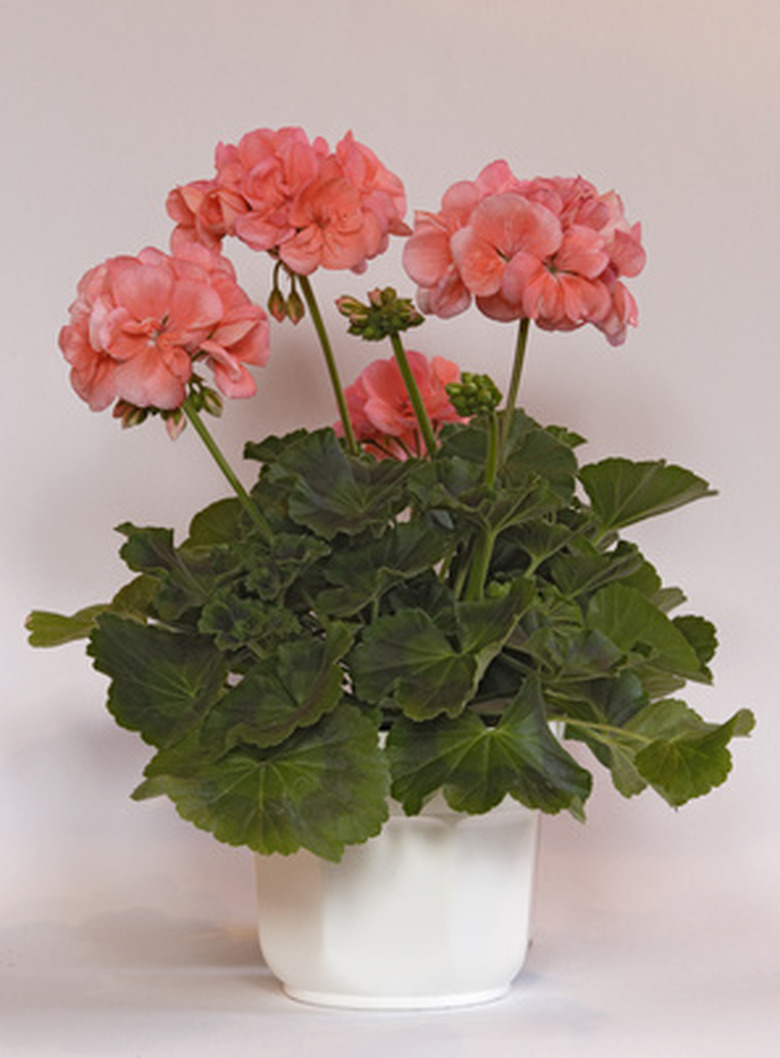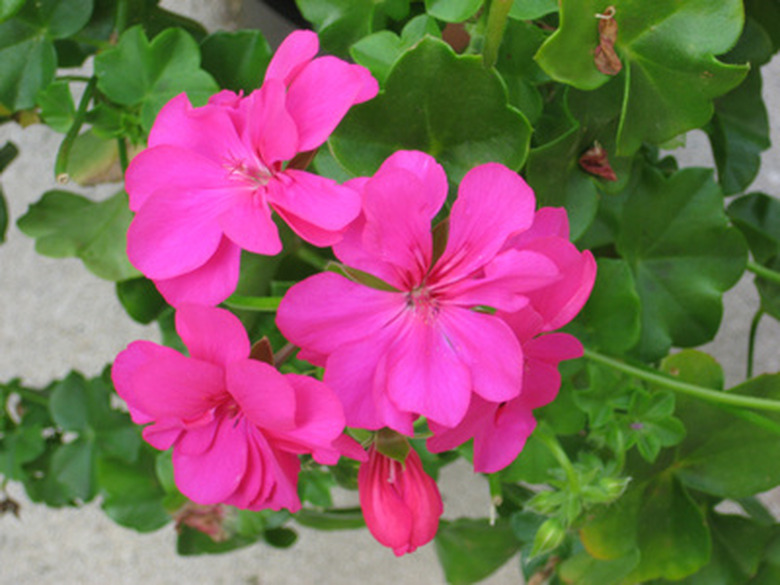Temperatures For Geraniums
Geraniums prefer temperatures over 60 degrees F. Temperatures below this cause leaves to turn rosy red and become weakened. Growth slows, but plants generally do not die. Geraniums perform best with 6 hours of sunlight per day. They bloom in every color and are easy to propagate by cuttings. Geranium foliage can be lacy and delicate, deeply segmented or round and sturdy. They are generally easy to grow.
Outdoor
Geraniums should not be grown outside until all danger of frost is past. Check with your local garden center or National Weather Service for local frost dates (see Resources).
- Geraniums prefer temperatures over 60 degrees F. Temperatures below this cause leaves to turn rosy red and become weakened.
When soil has warmed to 60 degrees F, geraniums can be planted either in flower beds or containers. Plant them in areas that get at least 6 to 8 hours of sunlight per day. Trailing varieties such as ivy geranium do well in hanging baskets or window boxes, and have the same temperature requirements.
Indoor
Temperature for indoor geranium growing is ideal at 65 to 70 degrees F during the day and 55 degrees F at night. High intensity light near windows is recommended but they can tolerate moderate light as well.
Treat indoor geraniums as all houseplants with regular fertilizing, frequent attention to water, and re-potting when needed. Geraniums require less water than many indoor plants; topsoil should be dry to the touch when water is needed.
- When soil has warmed to 60 degrees F, geraniums can be planted either in flower beds or containers.
- Geraniums require less water than many indoor plants; topsoil should be dry to the touch when water is needed.
Bedding
Temperature requirements for bedding geraniums are also 60 degrees F and above. Frost damages the tender leaves. Bedding geraniums benefit from a regular fertilization program. Add compost to a depth of 12 inches when they are planted and continue side dressing with compost every 4 to 6 weeks during growing season. Geraniums thrive in loose soil that is rich in organic matter. Clay soil may be amended with organic materials such as peat moss or compost.
Propagation
The temperature to propagate geraniums is ideally above 60 degrees F. Take cuttings 3 to 4 inches in length from the growing tips of branches in September to October. This allows three to four weeks for roots to develop before the first frost.
- Temperature requirements for bedding geraniums are also 60 degrees F and above.
- Add compost to a depth of 12 inches when they are planted and continue side dressing with compost every 4 to 6 weeks during growing season.
Geraniums root easily from cuttings. Keep the mother plant relatively dry for several weeks before taking the cuttings. Put cuttings in vermiculite or coarse sand, place in indirect light, and do not let them dry out. After roots develop, keep new plants moist but not over-watered.
Varieties
Geraniums have over 400 known species in their genus, and all have similar temperature requirements. They are found in all temperate regions of the world and are sometimes known as cranesbills.
Geraniums are sometimes called hardy geraniums, to distinguish them from pelargoniums, which have similar culture but an irregular flower petal formation. Scented geraniums are grown for the aroma of their leaves: peppermint, chocolate, nutmeg and lemon.
- Geraniums root easily from cuttings.
- Geraniums are sometimes called hardy geraniums, to distinguish them from pelargoniums, which have similar culture but an irregular flower petal formation.


